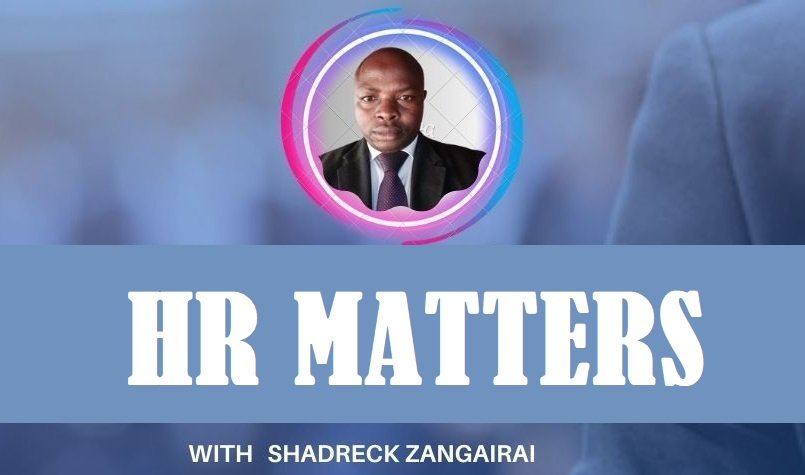By Shadreck Zangairai
When to Start Retirement Planning for Employees
There is a common misconception among most employees, and it often sounds something like, “I have plenty of time to prepare for retirement. There’s no need to rush.” Others think, “As soon as I get my finances sorted, I’ll start thinking about retirement.” Unfortunately, these thoughts can result in an unhappy retirement. As alluded to by Anderson, (2016), retirement planning for employees should start with inculcating the below two foundational concepts in them:
- If you wait for the “perfect” or “right” time, you’ll never start.
- The earlier you get started, the better. However, it’s never too late to start.
With these two concepts in mind, employees can be encouraged to plan for retirement immediately. Neither their age nor their current finances should come in the way of retirement planning.
How Organisations can help employees to retire
The transition to retirement can be an extremely overwhelming process for both employees and employers. Retiring employees face concerns and uncertainty as they move from a full-time income to relying on Social Security benefits and retirement savings. For employers, losing long-tenured employees can create critical gaps in their talent and knowledge base if they do not have a strategic retirement process in place. So what strategies and best practices can organizations implement to make retirement transition successful for both the retiree and the organization? Below are some of the ways organisations can employ to help employees make a smooth transition to retirement.
Assessment of Culture- Does your company discuss retirement openly, with positive tones? Having a retirement-positive culture is critical to help employees plan and feel supported as they prepare for their next stage in life. It also helps by providing organizations with more time to plan career paths and create better continuity. Another benefit of fostering a positive culture around retirement is that it can reduce the taboo of leaving which often results in an employee’s surprise retirement announcements and leaves the organization rushing to replace them and fill in gaps in key positions or the leadership funnel.
Encourage Early Retirement Planning- A survey in 2022 on employee transition in the pharmaceutical sector showed that 67% of employees begin thinking about their retirement between the ages of 55 and 65. However advice from the Pensions Department recommends that leading organizations should realize that retirement planning begins as early as 30 years before retirement and that organisations should provide support to emerging employees early in their careers. Employees are encouraged to have conversations around retirement early, when they still have time to plan financially and prepare for the emotional, lifestyle, and family adjustments that will happen. Thinking about the retirement process early can help employees better understand whether they can afford retirement, as well as determine what they want their retirement years to look like, if they’re healthy enough to engage in the activities they have planned, and if they’re prepared emotionally for the transition. This kind of attention to life-after-work planning builds employee loyalty and retention.
Provide Flexible Alternatives- it is an undeniable fact that many retirement-age employees want to continue working, mostly due to financial reasons. Phased retirement programs, widely used to assist workers in their shift away from the workforce, allow employees to modify their workload, either by transitioning to part-time work or by having their hours reduced. Offering phased retirement options to your older workers allows both your organization and the worker to adjust over time, rather than scramble to deal with an abrupt departure. With phased retirement options, organizations can plan better since they know well in advance when an employee plans to leave and can arrange for experienced workers to mentor younger ones, transferring their years of employer-specific knowledge.
Take a Holistic Approach- Retirement is more than just ending one’s career to live off accumulated savings. With growing life expectancies, retirement can last well beyond 30 years. For many workers, their employer is the primary source, and sometimes the only source, of information and support for retirement preparation. Providing a form of retirement coaching that looks beyond the finances can help employees prepare and experience a more fulfilling retirement. Through an organisation’s retirement options program, employees are guided through the retirement planning process with a certified career coach, assessing and exploring areas of their lives such as work, family, leisure, wellness, and personal development
Recognize employees- It’s important to recognize the benefits older workers who are nearing retirement bring to the organization. They have years of knowledge and experience, dedication to the job and company, and a strong work ethic. In addition, older workers are able to provide leadership and mentoring to younger employees, which helps foster knowledge transfer. Recognize the contributions those near retirement have made to the organization by engaging them in mentorship programs, asking for their input, and putting them on new project teams. A common misconception is that older workers are not interested in new opportunities or trainings and are just “coasting” until they retire. By engaging them, recognizing the value they bring, and providing them with additional training, retiring employees will feel valued for their work and supported in their journey. Making retirement a positive event and properly preparing for and supporting an employee’s retirement creates a win-win for the organization and retiree.
Factors to Consider for Employees’ Retirement Planning
As you begin to task HR teams with retirement planning for employees, there are some important factors to consider. While organizations can have HR teams help employees, it’s best to have them work with a financial planner to achieve the best results.
• Employee Goals- A very important factor in employee retirement planning is what their financial goals are once they retire. Do they wish to travel, work on their hobbies as a business or work with non-profits? Employees should be asked to write down their goals and the cost estimates of each.
• Timelines to Achieve Retirement Goals- Timelines will help set the trajectory for the actions to take and the retirement products that can be achieved within those timelines. Having a primary date and a secondary date can help if retirement planning is being done late in life. Having a secondary date gives you a little extra time to prepare if necessary.
• Employee Needs Post Retirement- Organizations need to make employees aware that they need to decide the amount of money needed for regular living expenses. These include rent or mortgage, utilities, insurance, and so on. If the employee plans to move to another area or city, they need to factor in the cost of living in that location. Besides this, they need to ensure they have emergency expenses, home maintenance, other such expenses factored in.
• Investment Options for Employees- There are many retirement options available, including employer-sponsored retirement plans, pension plans, and others. You can also consider stock options according to your retirement timeline. If the employee is starting at a young age they can take riskier options with better returns.
To be continued!!!







